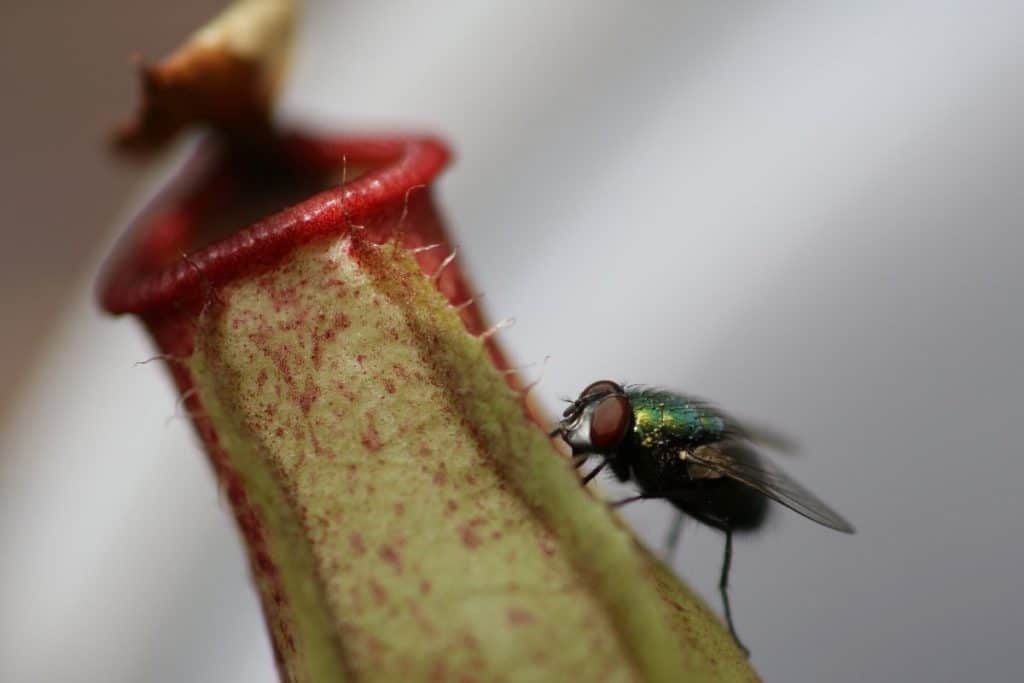
Feeding a Nepenthes Pitcher plant is not really necessary but in some cases, it can be very profitable for the plants' growth and overall health. So, how exactly do you feed Nepenthes Pitcher plants?
Feeding a Nepenthes Pitcher plant can be done by inserting small living insects, fish flakes and crushed pellets, freeze-dried bloodworms, or a light orchid fertilizer right into the pitcher. When feeding the Nepenthes pitcher, always make sure that the traps are ¾ filled with mineral-free water (distilled water or rainwater).
This blog post explains in detail how to feed nepenthes pitcher plants. Which type of food you should choose for this plant and how often you should feed it? let’s get started…
Photo above by: laikolosse
Contents
What to Feed Nepenthes Pitcher Plants?
The most obvious and easiest way to feed pitcher plants is to grow them outdoors where they can catch bugs on their own. So you should grow them in a place where they can catch bugs easily (on a patio or a balcony). But what if you keep your plants indoors where there are not enough bugs to catch? Then, you should collect some bugs and feed the plants to keep them healthy!
What if you don’t have enough time to collect bugs to provide the plants with sufficient nutrients? Then, you can feed them with some alternative food sources so that they don’t miss out on essential nutrients.
Below are some usable and unusable food sources for your nepenthes pitcher plants:
1. Fish Flakes & Crushed Pellets
Both fish flakes or crushed koi pellets are an incredible alternative to insects for carnivorous plants. They are a great source of several nutrients including a lot of animal protein. Plus, plants can easily absorb this food. You can try TetraFin Goldfish Flakes and Koi Pellets. You can buy these products in your local animal store or online on Amazon.
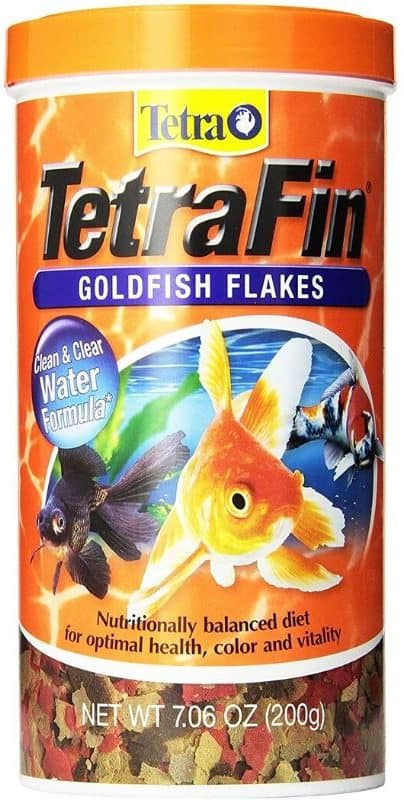
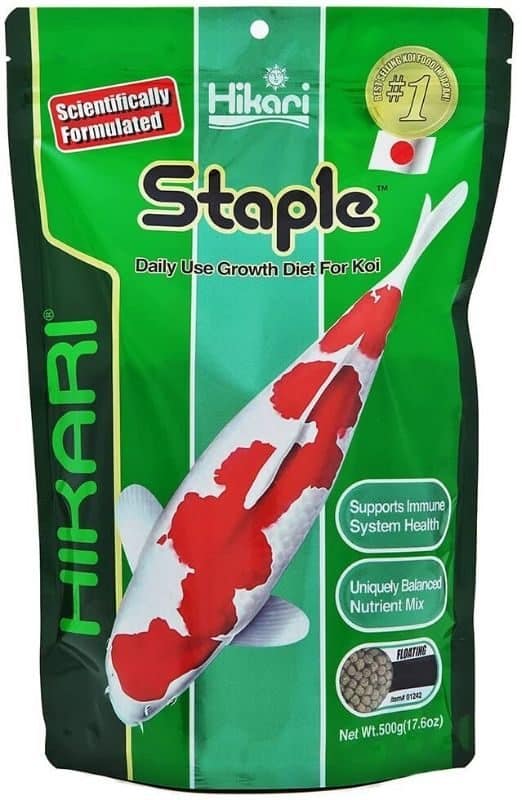
2. Bloodworms
Freeze-dried bloodworms are another delicious food source for carnivorous plants. Firstly, this food source is a nutrient-rich snack that contains all the vital nutrients the Nepenthes pitcher plant needs. This source is also a great disease resistant to the plants. It contains a polymer commonly known as chitin in their exoskeletons. You can also find chitin in the cell walls of fungi.
Carnivorous plants can detect chitin fragments from fungal infections. These fragments trigger a defense mechanism to protect the plant. The extra amount of chitin in bloodworms strengthens the plant's defense without introducing actual fungus. This defensive mechanism prevents infections even in vulnerable plants such as Butterworts (Mexican Pinguicula).
I use bloodworms from Tetra, my plants have always responded well on these. You can buy them from amazon or a local animal store.
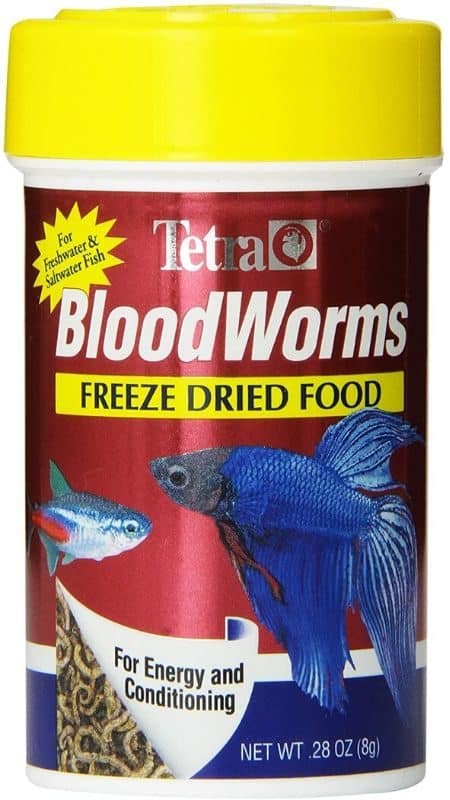
3. Fertilizers
There are some fertilizers that you can use as an alternative food source for carnivorous plants. For example, you can use Oscomote and Maxsea but you can easily "overfertilize" your plants with these products as they are strong. That is why I strongly advise against using fertilizer for a Nepenthes. But if you want to try and use fertilizer on Nepenthes, good luck.
Different types of carnivorous plants need different types of fertilizers. For example, nepenthes pitchers plants appreciate pitcher-fed fertilizers. Similarly, Heliamphora and Sarracenia want you to add fertilizer in the soil. Never use strong fertilizer because it will burn the leaf and pitchers. So always dilute the fertilizer with water to prevent your plants from burning. When using Oscomote or Maxsea always make sure the pitcher is ¾ filled with mineral-free) water.
4. Meat
The majority of the carnivorous plants rarely eat meat in the wild. Because besides essential nutrients, it attracts some harmful bacteria. The bacteria can be very destructive for your plants. So this food is not appropriate for all types of CPs. When a Nepenthes is fed meat or other human food, there is a big chance that the trap will die and fall off.
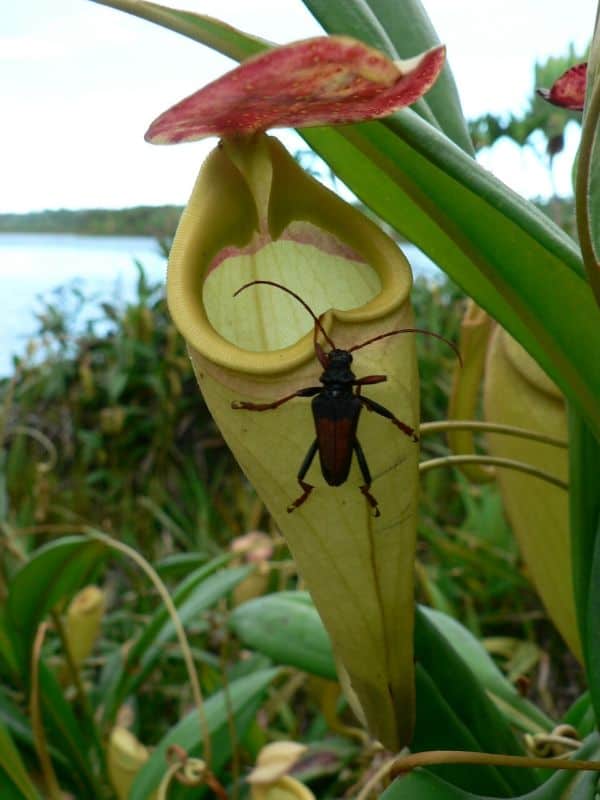
Photo by: Katja Rembold
How and When to Feed Nepenthes Pitcher Plants?
There are different types of carnivorous plants. You might face some difficulties when you feed them nutritional food. Pitcher plants are most possibly the easiest carnivorous plants to feed. But, its important to know when to feed a nepenthes and when you don't have to feed them. When they are not able to catch insects frequently, they become weak. As a result, their growth will slow down and in the worst-case scenario, they will eventually die.
You can still keep them healthy by providing them the above-mentioned food. During their active growing season, drop fish food, crushed fertilizer pellets, or bugs in a few of the pitchers every 2 to 3 weeks. But before dropping the food, check if pitchers are dry. If the pitchers are dry, fill ¾ of the pitcher with mineral-free) water using an eyedropper or pipette. You can squirt water before or after placing the food. However, it is better to squirt a few drops of water after feeding them to flush down the food into the pitcher's trap.
If pitchers are dry and you don’t provide them water, they will be unable to absorb the nutrients. Don’t move the plants when pitchers are full. If moving the plants is very necessary, you should be very careful when moving the plants. Partially digested food from a spilled pitcher has a really strong and nasty smell to it, you don't want to spill that on your cough.

Photo by: Gee
Some Useful Tips!
If you don’t choose an appropriate place to grow CPs, plants will not grow properly. Then, you will have to feed them frequently. If you have plenty of plants, feeding can be a time-consuming process. On the other hand, artificial foods can’t replace natural foods. Here are some important tips you should keep in mind for growing healthy pitcher plants:
- Try to grow pitcher plants outdoors if possible. Because outdoor areas contain more bugs compared to indoor areas.
- Prepare the soil effectively by mixing sand’s 1 part and peat moss 4 or 5 parts or use 100 percent live sphagnum moss. Plants thrive very well in such soil.
- Don’t let the soil dry but also don't have the soil soaked at all times. Water the plants frequently. It boosts the plants’ health!
- You don’t need to feed healthy plants. However, you should provide them with the recommended foods in this post if they are not surviving well. I highly recommend you to feed them bloodworm and fish flakes. Because these are a rich source of important nutrients for your plants.
- Try to avoid fertilizers if possible. Because if you choose wrong or a strong fertilizer, you will burn your plants. If it is necessary, you should feed them whether Oscomote or Maxsea.
Wrapping Up
This article gave you a brief overview of which foods are good alternative options instead of living bugs for pitcher plants. Plus, you have learned how to feed carnivorous plants. Hopefully, you found it very helpful. Now, you will be able to choose an appropriate type of food for your pitcher plants. And, feeding them will be easy for you!

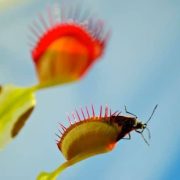
Leave a Reply